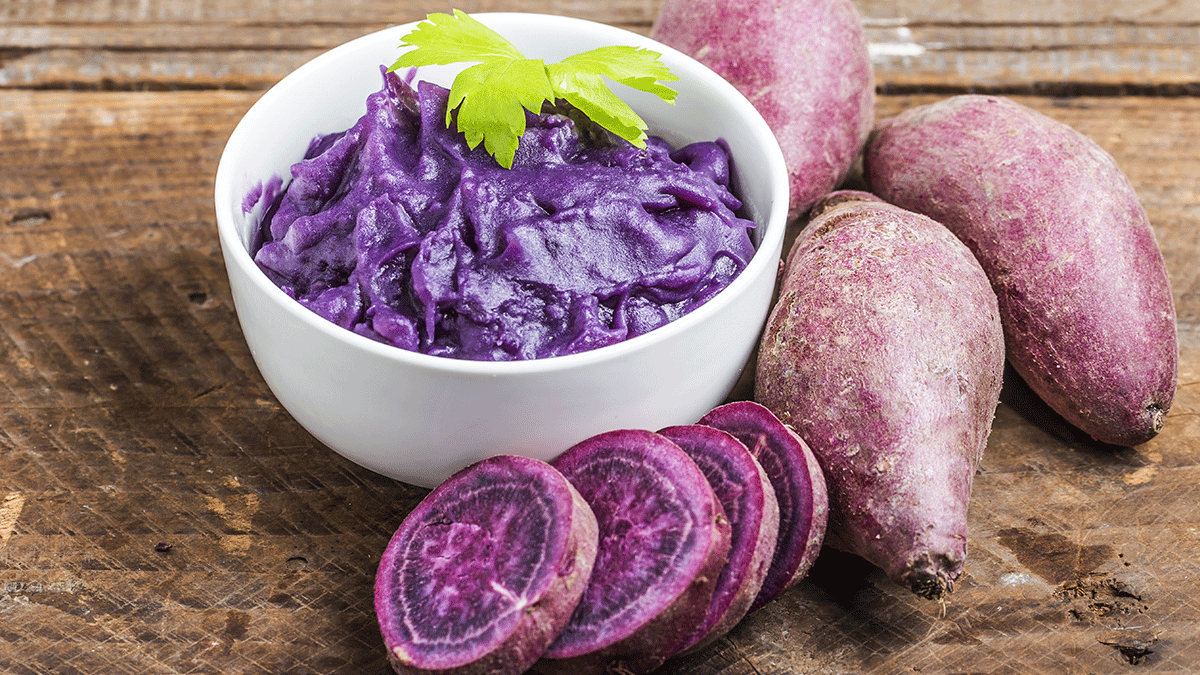Orange, white, purple… sweet potatoes naturally come in varieties of colors that represent the taste, texture and nutritional value.
Sweet potatoes are one of the most nutritious vegetables you can eat and it can be cooked in many different ways.
There are different types of sweet potatoes all over the world and about a hundred varieties of them are available all year long.
Most people associate sweet potatoes as orange colored potatoes and wrongfully identify them as Yams.
Sweet potatoes are distantly related to potatoes and have no direct relation with yams. Orange sweet potatoes are commonly mistaken as yam in the United States because some canned sweet potatoes are erroneously labeled.
The two greatly differ in appearance, family, taste and overall look.
These orange sweet potatoes are known to be a great source of beta carotene.
The presence of beta carotene gives sweet potatoes its natural orange color like carrots.
The darker the shade of orange a sweet potato has, the greater the presence of beta carotene is.
Though white sweet potatoes are not as nutritious compared to the orange ones, these types of sweet potatoes are known to be a lot sweeter compared to their orange counterpart.
The recently discovered purple sweet potatoes however, are four times more nutritious than the orange ones.
What do sweet potatoes’ beta carotenes and anthocyanin exactly do in our body?
- Beta carotene is the forerunner of vitamin A that is naturally converted to the much-needed vitamin in our system.
Vitamin A is not just responsible for our vision but also helps maintain our skin integrity.
It is also responsible to pumpkins’ and sweet potatoes’ yellow to orange color.
However, beta carotenes are three times more abundant in sweet potatoes compared to pumpkins.
This makes sweet potatoes a better choice to get beta carotene.
- Sweet potatoes are good sources of anthocyanin which work as antioxidants in our body.
The anthocyanin antioxidants work by binding with the cancer-causing free radicals ingested in the body that makes them more helpful to the body.
The presence of anthocyanin in sweet potatoes makes the color more red or purple.
It is also responsible for making blackberries, blueberries and red cabbages’ purple color.
Like the other sweet potatoes, purple sweet potatoes are tasty but are more difficult to find.
And when you find and prepare them for your meal, they may not be as pleasing to the eyes compared with white or orange sweet potatoes.
You might have seen some fast food chains having sweet potato fries as part of their menu but you’ll hardly see purple sweet potatoes as fries.
Regardless if they are white, orange or purple sweet potatoes, rest assured you’re taking in better nutrients than their carb counterparts.
Though they are prepared more tediously as you have to peel after boiling or grilling, the nutritional values and their health power could simply overwhelm the hassles.
And though others just can’t walk away from rice, pasta or bread, learning to integrate sweet potatoes in their daily meals gradually might just spell the remarkable difference in their diet.

